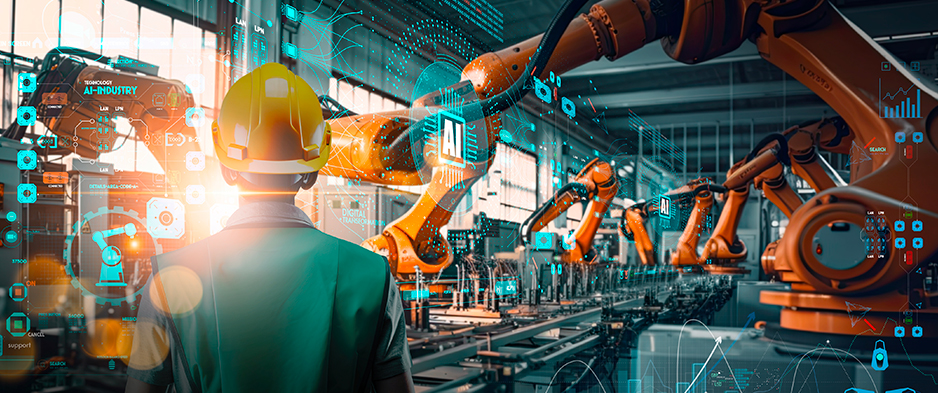To realize the Industry 5.0 paradigm, it is essential to leverage artificial intelligence and edge computing to improve the efficiency of production processes. By enabling data analysis directly on-site and in real-time, these technologies reduce downtime, optimize resource utilization, and enhance overall quality. This approach helps companies meet evolving market demands and maintain a competitive edge in a constantly changing industry.
Key Benefits of AI and Edge Computing on Process Efficiency
1. Real-Time Monitoring
Machine downtime is a significant issue for factories, causing delays and additional costs. Thanks to sensors and data processing performed locally through edge devices, machine conditions can be monitored in real time. Artificial intelligence analyzes this data to detect anomalies and early signs of potential failure. This enables a shift from scheduled maintenance to predictive maintenance, reducing downtime and related costs.
2. Production Optimization
Identifying inefficiencies and bottlenecks in processes is not always straightforward. While AI analyzes every stage of production to detect operational defects, edge computing allows real-time corrections without the need to send data to a remote cloud. This enables dynamic, continuous adaptation of production lines.
- More Accurate and Faster Quality Control
One of the main advantages of integrating AI and edge computing to improve efficiency is the ability to perform automated, highly precise quality checks. Smart sensors and cameras collect data and images, which are immediately analyzed on-site by machine learning algorithms to detect defects or deviations from standards on the production line without slowing down the process.
4. Intelligent Resource Management
Real-time, local analysis of operational data enables optimization of raw materials, energy, and labor use. Quick decisions can be made to reduce waste and improve energy efficiency, resulting in a more sustainable and cost-effective production.
5. Enhanced Workplace Safety
Workplace safety is critical for every company. Through intelligent sensors and AI systems implemented at the edge, the work environment can be monitored in real time to detect hazardous conditions or risky behaviors. This allows timely interventions to prevent accidents, protecting workers and minimizing disruptions.
6. Flexible and Collaborative Automation
Increasingly, robots and human operators work side by side on production lines. AI and edge computing facilitate this cooperation by allowing cobots to adapt to sudden changes and operate safely alongside people. This approach makes processes more flexible and responsive, boosting productivity without compromising safety or quality.
7. Predictive Analytics and Faster Decision-Making
Finally, AI and edge computing enhance production efficiency by enabling to predict trends and demand fluctuations through predictive analytics performed directly on-site. This allows companies to better plan production, reducing excess inventory and delays. Data-driven, timely decisions improve customer responsiveness and overall competitiveness.

